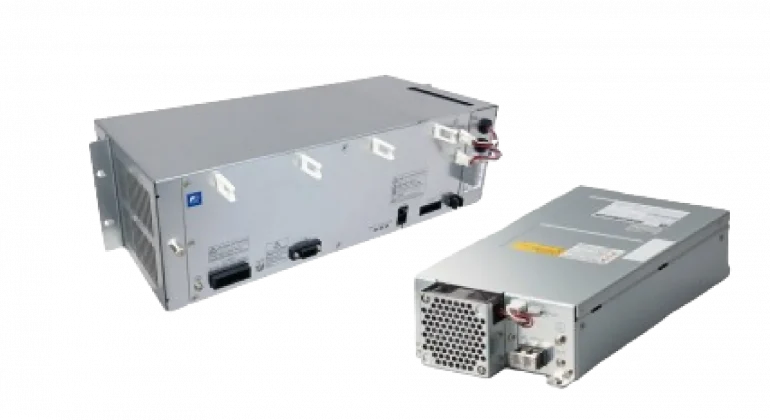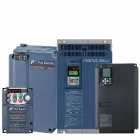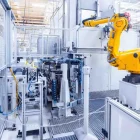A device that gives electricity to an electrical load is called a power supply. It changes the voltage, current, and frequency of electricity coming from a source, like a wall outlet, so that it can power a device. Think of it as the translator between the power grid and your sensitive electronics.
Why are power supplies so essential? Simply put, without them, most of our devices wouldn’t work. They protect our gadgets from voltage spikes and ensure a stable, consistent power flow.
Types of Power Supplies
There are many different types of power supplies. We’ll cover the most common ones here:
AC to DC Power Supplies
These convert alternating current (AC) from a wall outlet into direct current (DC), which most electronic devices use.
Linear Power Supplies
These are simpler but less efficient. They use a transformer to step down the voltage and then convert it to DC. However, they generate a lot of heat and are larger due to the size of the transformer.
Switching Power Supplies (SMPS)
These are more efficient and compact. They utilize high-frequency switching to convert AC to DC, allowing for the use of smaller transformers and achieving improved efficiency. SMPS are widely used in modern electronics due to their compact size and high efficiency.
DC to DC Converters
These change one DC voltage level to another.
Buck Converters
Step down voltage. They are used when the input voltage exceeds the required output voltage. For example, converting a 12V input to a 5V output.
Boost Converters
Step up the voltage. They are used when the input voltage is lower than the required output voltage. For example, converting a 5V input to a 12V output.
Buck-Boost Converters
Can step up or down in voltage. These converters are versatile and can handle both higher and lower input voltages compared to the output.
Uninterruptible Power Supplies (UPS)
These provide backup power during outages (Fuji Electric offers these).
Online UPS
Provides continuous power from the battery. It always uses the battery to power the load, ensuring zero downtime during power outages.
Offline UPS
When the primary power source fails, it automatically switches to battery power. It only uses the battery when the main power is lost, making it a more cost-effective solution.
Line-Interactive UPS
Regulates voltage and provides battery backup. It changes the voltage coming in to match the voltage going out, and when the power goes out, it switches to battery power.
Programmable Power Supplies
These allow users to control and adjust the output voltage and current. They are often used in laboratories and testing environments where precise control over power output is necessary.
High Voltage Power Supplies
These power devices that need a high voltage to operate, such as mass spectrometers. They are designed to handle high voltages safely and efficiently.
Key Components of a Power Supply
Power supplies are made up of several key parts:
Transformer
Steps up or down the voltage. In linear power supplies, transformers are used to adjust the voltage level before conversion to DC.
Rectifier
Converts AC to DC. (Diodes are used to create a bridge rectifier.) The rectifier ensures that the output is always positive, converting the AC waveform into a pulsating DC waveform.
Filter
Smooths out the DC voltage. (Capacitors and inductors are used for this.) Capacitors store energy and release it to maintain a stable voltage, while inductors help filter out unwanted frequencies.
Voltage Regulator
Maintains a stable output voltage. This ensures that the output remains within a specific range, even if the load or input voltage changes.
Control Circuitry
Manages the power supply’s operation. This includes monitoring temperature, voltage, and current to ensure safe and efficient operation.
Power Supply Specifications and Terminology
Understanding power supply specs is essential when choosing the right one. Here are some key terms:
Voltage (Input and Output)
The electrical potential is measured in volts. The input voltage is what the power supply accepts from the power source, while the output voltage is what it delivers to the device.
Current (Amperage)
The flow of electrical charge is measured in amps. This determines the amount of power that can be delivered to the device.
Wattage (Power)
How fast electricity is sent, measured in watts (Volts x Amps = Watts). This is crucial for ensuring the power supply can handle the total power requirements of all components.
Efficiency
The amount of input power that is turned into output power as a percentage. If something is more efficient, it wastes less energy as heat.
Ripple and Noise
Small fluctuations in the output voltage. These can affect the performance of sensitive electronics.
Regulation
Keeping the output voltage steady even when the load changes. Good regulation ensures consistent performance even when the device’s power needs change.
Hold-up Time
This refers to the duration for which the power supply can maintain its output during a brief power interruption. This is important for ensuring devices stay on during short outages.
Protection Features
- Over-Voltage Protection (OVP)
Protects against excessive voltage. This prevents damage from voltage spikes.
- Over-Current Protection (OCP)
Protects against excessive current. This prevents overheating and damage from too much current.
- Short-Circuit Protection (SCP)
Protects against short circuits. This prevents damage from accidental connections.
- Over-Temperature Protection (OTP)
Protects against overheating. This ensures the power supply doesn’t overheat and fail.
Applications of Power Supplies
Power supplies are utilized in various tasks, including:
Computers and Consumer Electronics
Power supplies allow these devices to use DC power instead of AC power from the wall outlet.
Industrial Equipment
Fuji Electric offers solutions like Low Voltage and Medium Voltage Variable Speed Drives, PLCs, Power Conditioners, and HMIs. These are used in manufacturing and automation to control and power machinery.
Telecommunications
Power supplies are crucial for maintaining the smooth operation of communication networks.
Medical Devices
These require reliable power supplies to ensure patient safety and accurate operation.
Renewable Energy Systems
Solar or wind panels can make electricity that can be used with the help of power supplies.
Troubleshooting Power Supplies
Is your device acting up? The power supply might be the culprit.
Common Symptoms of a Failing Power Supply
Device not turning on, random shutdowns, weird noises, burning smells, or power-related error messages.
Basic Troubleshooting Steps
Check the power cord, look for blown fuses, and test the output voltage with a multimeter.
Safety Precautions
Always disconnect the power supply before working on it. If you are not comfortable, seek help from a professional.
Pro-Tip: Keep an eye out for power supplies with active power factor correction (PFC). Active PFC improves efficiency and reduces harmonic distortion, leading to a cleaner and more stable power supply for your devices.
Choosing the Right Power Supply
Selecting the proper power supply is crucial for the performance and longevity of your devices.
Determining Power Requirements
Calculate the total wattage needed by all components. Add a buffer for safety.
Considering Efficiency and Reliability
Look for power supplies with high efficiency ratings and good reviews.
Evaluating Safety Standards and Certifications
Make sure the power supply meets all safety requirements.
Pro-Tip: When calculating your power needs, it’s always best to overestimate slightly. Obtaining a power supply with more wattage than you currently need provides you with headroom for future upgrades. It ensures the power supply isn’t constantly operating at its maximum capacity. This can extend its lifespan.
Frequently Asked Questions
Signs include your computer or device not turning on, intermittent shutdowns, strange noises, burning smells, or error messages related to power.
Common failures include capacitors drying out, fan failures, diode failures, and transformer issues.
Calculate the total power consumption of all components and choose a power supply with sufficient wattage and appropriate voltage/connectors.
Yes, using a power supply with a higher amperage is generally safe, as devices will only draw the current they need. But the voltage must be correct.
Lifespan varies, but a good quality power supply can last 5-10 years or more.
Power supplies are vital components that often go unnoticed. A reliable power supply is essential for the proper functioning of electronic devices.
About Fuji Electric Sales Philippines, Inc.
Fuji Electric Sales Philippines, Inc. brings dependable products and expert support to businesses across the country. Backed by Fuji Electric Co., Ltd. from Japan, the company focuses on power electronics, automation, and energy-saving technologies.
Ready to boost your system’s reliability with a quality power supply? Fuji Electric is prepared to help you enhance your system’s performance!
Rickson Manalo
Assistant Sales Manager
0917-115 6102









